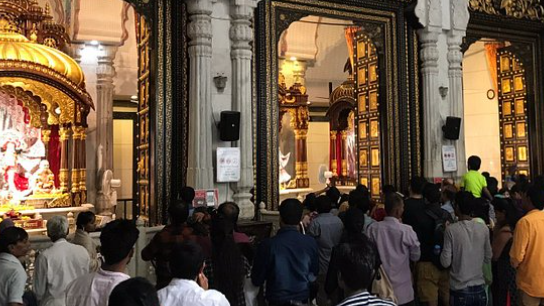

Bhubaneswar: In the heart of Bhubaneswar, the capital of Odisha, stands a magnificent testament to spiritual architecture and devotion - the ISKCON Temple. This divine sanctuary, which took approximately 7 years to complete, represents more than just a religious structure; it's a vibrant narrative of cultural preservation, architectural innovation, and spiritual awakening.
The temple's construction began in the late 1990s, involving a dedicated team of 250 artisans, architects, and craftsmen who collaborated to bring this spiritual vision to life. Unlike typical religious structures, this ISKCON Temple seamlessly blends traditional Kalinga architectural elements with contemporary design principles.
Principal architect Ramesh Chandra Pradhan meticulously incorporated local architectural nuances, ensuring the temple resonated with Odisha's rich cultural heritage while maintaining the sanctity of ISKCON's architectural philosophy. The project required intricate stone carving, precise structural engineering, and a deep understanding of both spiritual symbolism and modern construction techniques.
Beyond its architectural marvel, the temple serves as a crucial spiritual and cultural center. During Janmashtami, the temple transforms into a massive celebration hub, attracting over 100,000 devotees from across India.
The complex isn't merely a religious site but a comprehensive spiritual ecosystem. It houses:
The ISKCON Temple has significantly contributed to Bhubaneswar's tourism landscape. Annual visitor numbers exceed 500,000, generating substantial economic activity for the local community. The temple has become a must-visit destination for spiritual tourists, cultural enthusiasts, and architectural admirers.
Embracing modern environmental consciousness, the temple incorporates several sustainable design elements:
The temple goes beyond religious practices, actively engaging in social welfare. Its community kitchen serves thousands of free meals daily, while educational programs promote cultural understanding and spiritual growth.
Constructing the temple wasn't without challenges. Balancing traditional architectural principles with modern construction requirements demanded innovative solutions. The team navigated complex structural engineering challenges while preserving the spiritual essence of the design.
As Bhubaneswar continues to evolve, the ISKCON Temple stands as a beacon of spiritual and architectural excellence. Plans for expansion and further community engagement are continually being developed, ensuring the temple remains a dynamic, living institution.
The ISKCON Temple in Bhubaneswar is more than a architectural achievement; it's a living narrative of spiritual devotion, cultural preservation, and community development. Its walls tell stories of architectural brilliance, spiritual commitment, and human collaboration.
As the sun sets, casting golden hues on its intricately carved facades, the temple continues to inspire, educate, and serve - a true marvel of human creativity and spiritual aspiration.